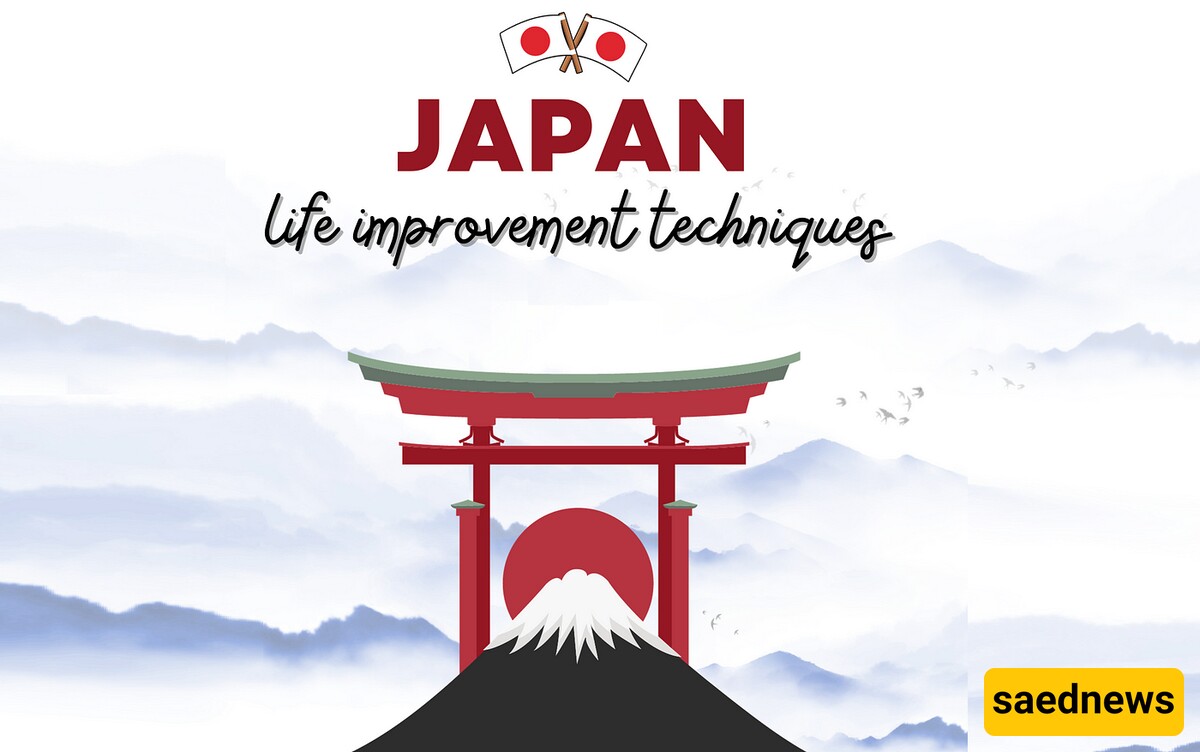SAEDNEWS: Japanese lifestyle principles like Kaizen, Ikigai, Zen, and the art of letting go focus on continuous improvement, purpose, simplicity, and mental clarity for a balanced and fulfilling life, But what are the rules behind this lifestyle?

According to SAEDNEWS, The human mind can be its greatest enemy or its best friend. If managed correctly, it can become our best guide. The Japanese follow specific rules and standards that help them better manage their minds. As a result, they have a higher chance of achieving success. In this article, we explore these Japanese principles.
This technique focuses on continuous improvement through small, positive, and sustainable changes. It is often rooted in teamwork and dedication, contrasting with strategies driven by drastic changes. Essentially, Kaizen is a self-improvement philosophy that enhances mental capacity, making it one of the most effective Japanese techniques.

Change can be intimidating, even when it’s positive. Attempting to achieve goals with radical methods often leads to failure due to increased fear. Kaizen, however, involves small, incremental steps that reduce mental fear and foster creative thinking.
Kaizen is a method of continuous improvement through small, positive changes, leading to significant results. This approach relies on collaboration and commitment, differing from top-down or radical change approaches.
Kaizen is widely used in factories and companies like Toyota. In production, it reduces defects, eliminates waste, boosts efficiency, motivates workers, and encourages creativity. The word Kaizen combines two Japanese terms that mean "positive change" or "progress."
This rule blends the symbols of life with intrinsic value, arising from within individuals. It represents a passion and a remarkable talent that reveals your ultimate purpose. After all, who doesn’t want a long and meaningful life? Most of us desire a purposeful existence, and Ikigai promises to help us achieve that.
A book about Ikigai is among the most influential worldwide, offering strategies to help us negotiate with our inner selves and avoid being victims of life’s problems.

The term "Ikigai" dates back to Japan's Heian period (794–1185). Akihiro Hasegawa, a psychologist and Ikigai enthusiast, pointed out in a 2001 research paper that gai derives from kai, meaning "shell" in Japanese.
During this period, shells were considered extremely valuable, inherently associating the word with worthiness. Similarly, the concept of Ikigai reflects "something worth living for," or what keeps you awake with excitement.
Gai represents the key to purpose or something valuable in life. The best way to find your ultimate goal is through the Ikigai Venn diagram, identifying the overlap between four areas:
1. What you are good at.
2. What the world needs.
3. What you can be paid for.
4. What you love.
This principle teaches how to harness mental abilities to find inner joy, brimming with vitality and enthusiasm. A book on this subject demonstrates methods to declutter the mind, providing practical guidance on eliminating burdensome thoughts.

The author aims to help readers let go of things that bother them, teaching them to focus on positive thoughts, calm their minds, and lead more organized lives.
The meaning of Zen has evolved over time, acquiring a spiritual essence. If practiced correctly, it reveals the miracles of life. The art of simple living, profoundly illustrated in a book on this topic, requires serious discipline and inner control.
The word Zen is Japanese, derived from the Chinese pronunciation Ch’an, meaning "meditation."
By incorporating these principles, the Japanese lifestyle offers powerful tools for mental clarity, discipline, and a fulfilling life.

